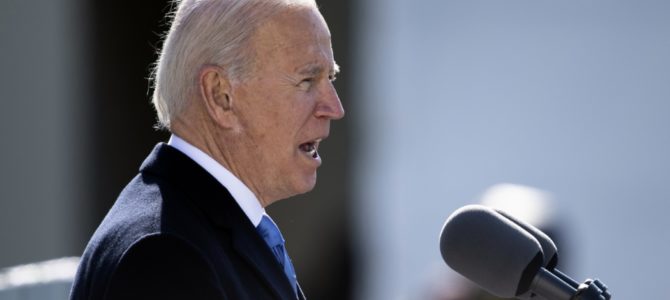
President Biden’s plan for federal coronavirus relief resembles the American Recovery Reinvestment Act (ARRA) signed by President Obama after the 2008 financial crisis. It uses several federal agencies to separately distribute financial assistance to persons unemployed, in poverty, or otherwise with low incomes, on top of the dozens of programs already in place. Predictably, it will result in a disappointing economic recovery as long as it lasts.
The plan includes a $100 weekly unemployment bonus, on top of the $300 bonus passed last month, which itself is on top of about $400 in weekly state unemployment benefits. It also includes additions to rental assistance, food stamps, health insurance assistance, and direct payments to households, all of which are available only if the recipient remains unemployed or otherwise with sufficiently low income. Biden also proposes to more than double the federal minimum wage.
Each of these types of assistance has been studied, with some authors finding no “statistically significant” adverse effect on hiring, work behavior, or earning power. But expect, as Obama’s team did 12 years ago, Biden’s team to assert that the adverse effects are zero for the individual programs and their combination.
Theirs is a “fallacy of the heap,” a logical fallacy that was well known to the ancients, long before economics was a distinct profession. The fallacy notes that removing a single grain of sand from a heap of sand still leaves us with a heap of sand. The same with the second grain of sand, and the third, and so on. Therefore, according to the fallacy, any number of grains of sand can be removed without removing the heap itself.
Every introductory economics teacher has to confront this fallacy. Invariably the class includes a student pushing back on the law of demand that raising prices reduces demand, “Raise the price of a car by a penny and that will not stop anyone from purchasing the car.” The teacher has to say, “OK, let the seller of the car raise the price $10,000, just one penny at a time. Each penny increase has no effect on sales — therefore a $10,000 price increase has no effect on sales,” and the fallacy is apparent.
The same holds for incentives to hire, work, or earn. Incentives to work may remain after adding a bit to food stamps, or rental assistance, or any of the other programs. But eventually, the absence of incentives will be apparent, especially among people whose incentives were already substantially eroded.
This is why the ARRA never came close to delivering the recovery promised by the Obama administration (in particular, by Jared Bernstein, who is now slated to be a member of Biden’s Council of Economic Advisers). The 2009 recession was particularly deep for unmarried people and others not coincidentally receiving the most generous assistance from the ARRA, as I showed in this study and my book on the 2009 “Redistribution Recession.”
This time, as vaccination and other measures begin to reduce the harms from the coronavirus, the fundamentals of the economy will be pushing toward recovery while the Biden plan holds it back about 5 million jobs below pre-pandemic levels (in addition to the 3 to 4 million reduction in employment from the December 2020 relief package). The Congressional Budget Office projects that the minimum wage provision by itself will cost more than 1 million jobs.
Biden’s plans for health insurance may do the most to reduce work. The 2010 Affordable Care Act (ACA) created what is now the most important credit against the personal income tax: credits for premiums paid for individual health insurance plans sold on the ACA “exchanges.” The rules determining eligibility and amounts for the credits create two kinds of disincentives to work.
The most important, but often forgotten, is an implicit tax on full-time work created by the ACA rule prohibiting the large majority of full-time workers from receiving credits because of their employment status (regardless of how much or little that job pays). These workers become eligible for the credits if (and because) they cease employment, or switch to part-time employment. The second disincentive applies to the comparatively few workers who purchase health insurance on the ACA exchanges: their credit is phased out with their income.
Take Mike Smith, who, in 2010, was working long hours in California as a district manager for a national auto parts retailer. Despite wanting to help care for his grandchild and elderly in-laws, Smith kept the manager job into his 60s because he and his wife wanted the health insurance that came with it.
According to National Public Radio, they both retired in 2014 because the ACA gave them heavily subsidized health insurance, for which they would have been ineligible if Smith had remained in his district manager job. Why spend their own money on health insurance when taxpayers would now pay most for them?
In other instances, workers at many schools, restaurants, and municipal offices were having their hours cut so the new law does not recognize them as full-time workers. Biden would increase these disincentives to hire, work, and earn.
The adage still holds: Subsidize something, and you’ll get more of it. As a result, expect the Biden economy to have additional unemployment, additional poverty, and lower incomes for a longer period.








